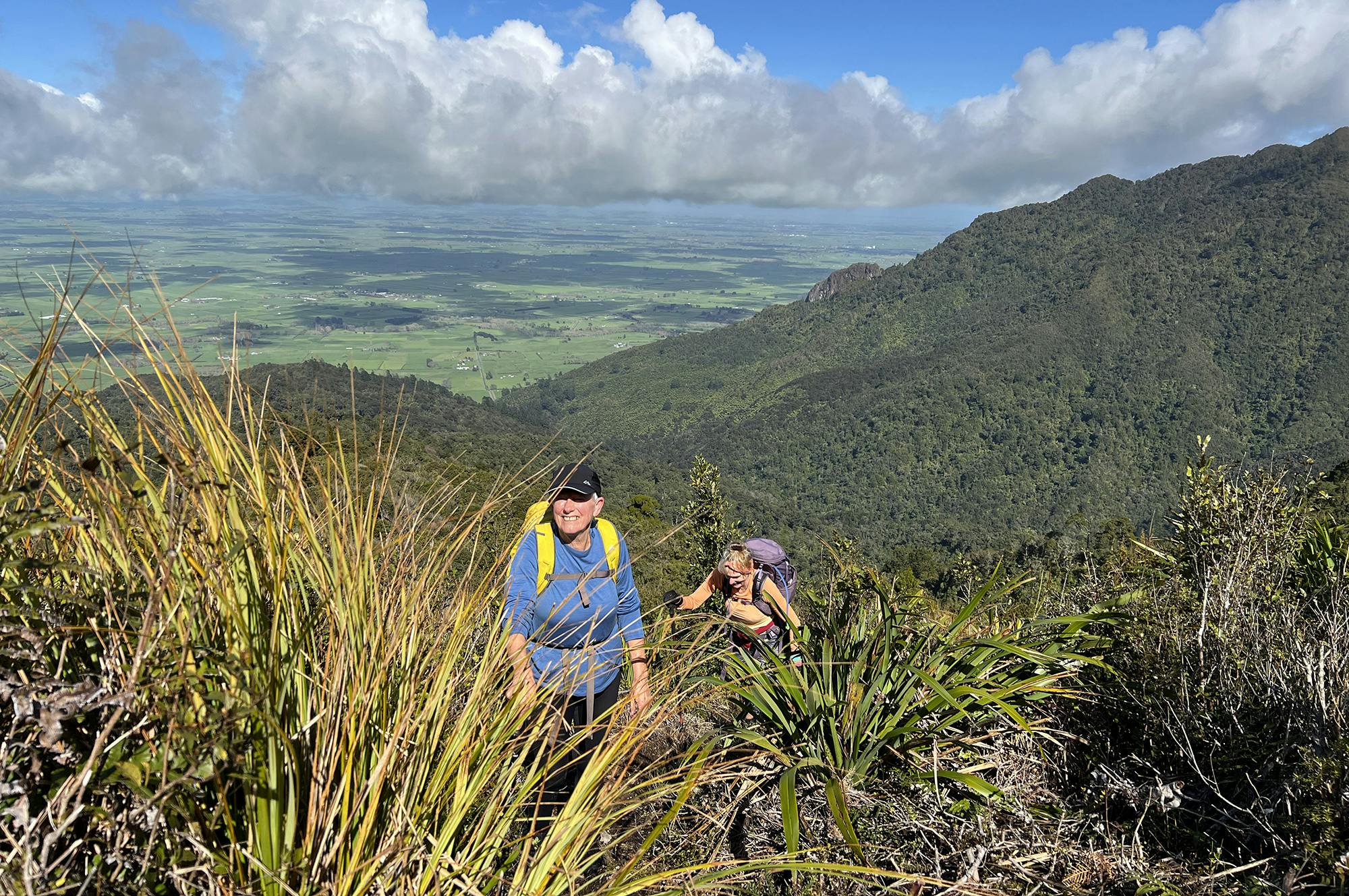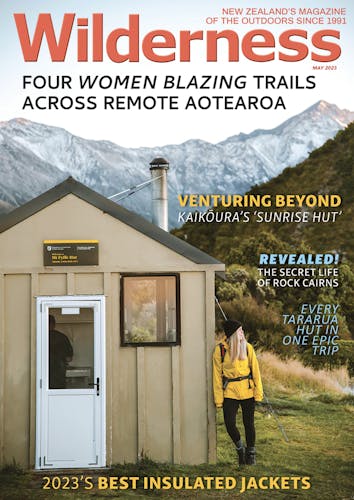The Waiorongomai Valley near Te Aroha is known for its gold mining history and has tracks for every fitness level. For those wanting a challenge and the reward of great views, start with the Pylon Peak Track. By Doris Neubauer
The numerous tracks leading through the Waiorongomai Valley can be confusing. It is hard to imagine how people originally found the start of the once unmarked Pylon Peak Track, which opened in 2015. Now, things are easier: About 150m from the start a sign points the way to the right, off the easily accessible Low Level Track.
The Waiorongomai River has to be crossed after a few metres. This can be difficult especially after heavy rainfall. And it’s just the beginning.
For the next 4–5km (around 3hr), the well marked track climbs, at times steeply, as it follows a spur upwards. Fortunately, there is much of interest along the way, such as the beautiful untouched bush and remains of the steel power pylons alongside the track.
The pylons were used for the power line linking the Horahora hydro station with the Waihi gold mine and Victoria Battery in the Karangahake Gorge. The power station was the first large station on the Waikato River. It was built in 1913 and commissioned in 1914. Six years later, the Government took it over, expanded output and supplied power to Paeroa and Cambridge, Hamilton and Auckland, before it was submerged by Lake Karapiro, after the Karapiro Dam was completed in 1948.
After the initial climb, the incline lessens for about 1500m and then steepens considerably for the ascent to the crest of the Kaimai Range. There are extensive views over the Waikato. Te Aroha can be spotted to the northwest. Following the trail for a few more metres leads to a rocky outcrop known as Pylon Peak, though it is not marked on the topo map.
This is also the junction with the Kaimai Ridgeway Track (formerly the North-South Track).
Take the left track northwest towards Pukekohatu, following the ridgeline for about 300m over a broad saddle. The 100m climb to Pukekohatu (799m) then begins.
The track skirts the western side of the summit and joins the Waipapa Track. This is followed around the head of the Waiorongomai Valley until it joins with the Te Aroha Link Track. It’s all downhill, first to Butlers Incline Track and then alongside the tracks of New Zealand’s oldest known railway of 1882, the Piako County Tramway. The trail passes over hanging bridges and even goes through a short mining tunnel.
There’s a couple of options to head back to the car park, one of which is the Low Level Loop Track (not named on the map but signposted). This is a particularly relaxing route and passes through regenerating bush for the last hour. There are waterfalls and more remains of the golden (mining) past. Looking to the left side of the trail, occasional views into the Waiorongomai Valley will help you realise that you’ve come a long way. Up and down and all around.
- Distance
- 12.7km
- Total Ascent
- 1131m
- Grade
- Moderate
- Time
- 6–7hr
- Access
- From the end of Waiorongomai Road, 4km south of Te Aroha
- Map
- BC35
GPX File
- Waiorongomai Valley Loop (gpx, 13 KB)
GPX File
- Your device does not support GPX files. Please try a different device.







